Support for Apple Silicon Mac
You can install this app on your Apple Silicon Mac(M1, M2...). Please note that this cannot be installed on an Intel Mac.
This app supports only AUv3 plug-in format. It can be used with AUv3-compatible DAWs. Other plug-in formats are not supported.
Important
Before using an AUv3 format plug-in in a DAW, launch the app as a standalone, to ensure that it initializes correctly.
If you have an AUv3 plug-in that does not appear in your DAW's AUv3 plug-in list, try the following steps
- Delete the AUv3 plug-in app.
- Restart macOS.
- Reinstall the AUv3 plugin app.
- Launch the standalone app for the installed app.
Basic Operation
Change selection by dragging

In the selection UI consisting of lamps and button(s), you can change the selection not only by using the button(s) but also by dragging.
The sound is not affected during selection by dragging. When you touch up, the drag selection will be reflected in the sound.
Finer Resolution for Dragging
By dragging horizontally, you can finely adjust the parameter values.
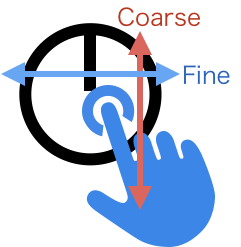
This function is not available when "Rotary Knob mode" is set to "Circular".
How to reset the parameter to the default value.
A quick double tap will restore the parameter value to its default value.
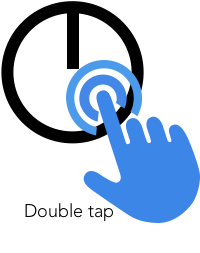
Rotary Knob mode
You can change the operation method of the rotary knob on the setting screen.
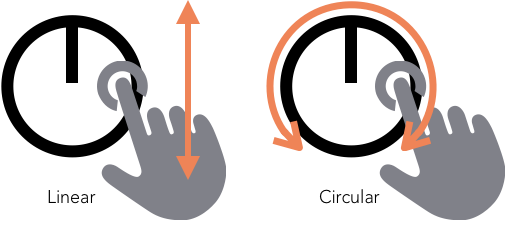
Preset
When you first open the preset browser, you will see three folders: Factory, User and Program.
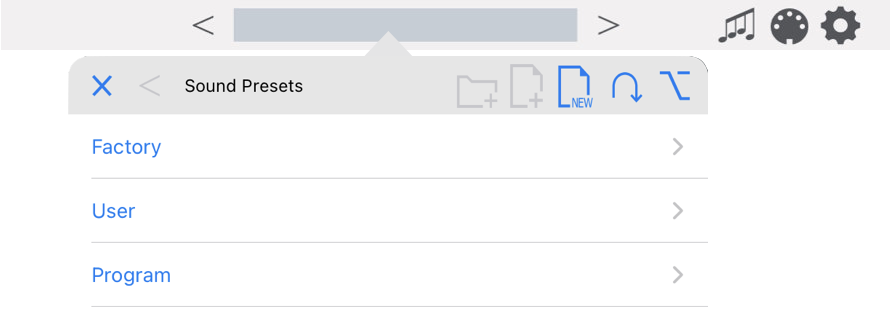
- Factory
- The Factory folder contains factory presets.
- User
- The "User" folder is where you can save your presets. Initially nothing is saved in this folder. When you import presets, they are also saved in this folder.
- Program
- The Program folder is a place to store presets that load when MIDI program changes are received. → Detail
Header Bar

Preset Browser
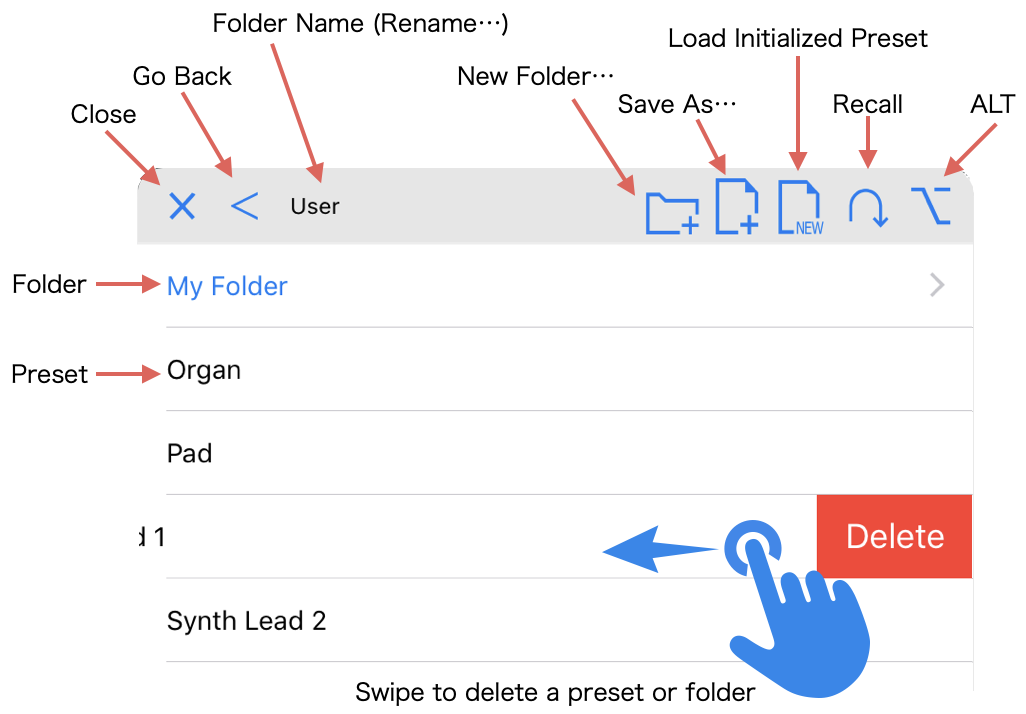
- New Folder...
- You can create new folders under the User folder.
- Save As...
- Save the currently loaded preset. Presets cannot be saved in the Factory folder.
- New
- Loads an initialized sound.
- Recall
- Recalls the sound that was loaded before opening the browser.
- ALT
- Displays a menu for editing the preset library.
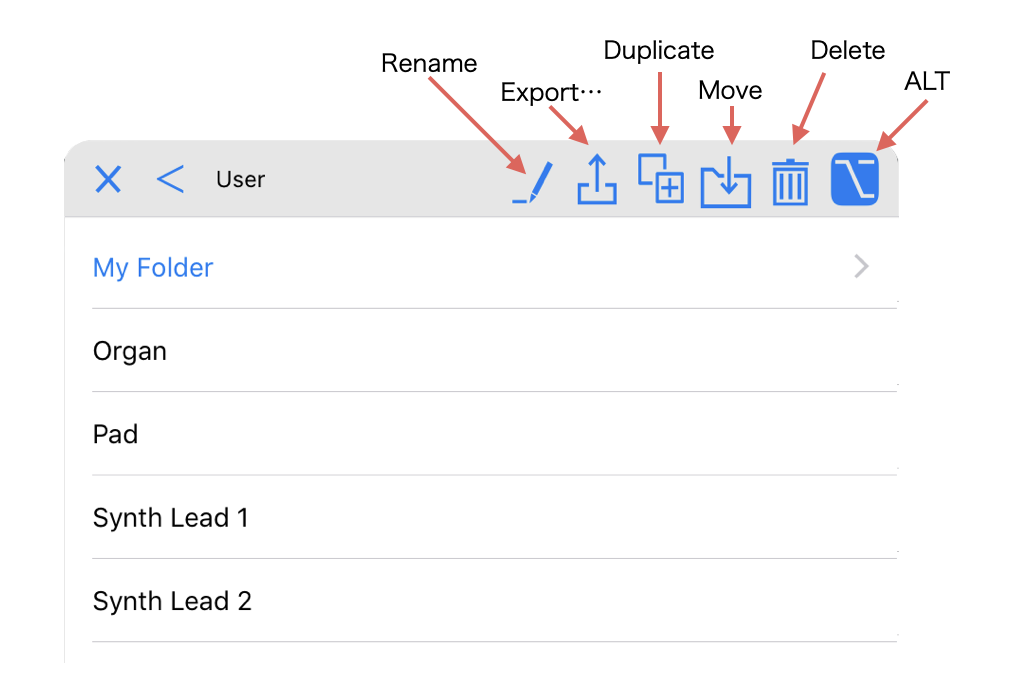
- Rename...
- Rename the selected preset. Not available for multiple selections.
- Export...
- Export the selected preset. Not available for multiple selections.
- Duplicate
- Duplicate the selected preset. Not available for multiple selections.
- Move
- Move the selected presets.
- Delete
- Delete the selected presets.
Display order of presets
The display order in the preset browser is sorted in alphabetical order, with numbers from 0 to 9 first, then capital letters A to Z, and finally a to z. Therefore, you can sort the order by putting a number before the name.
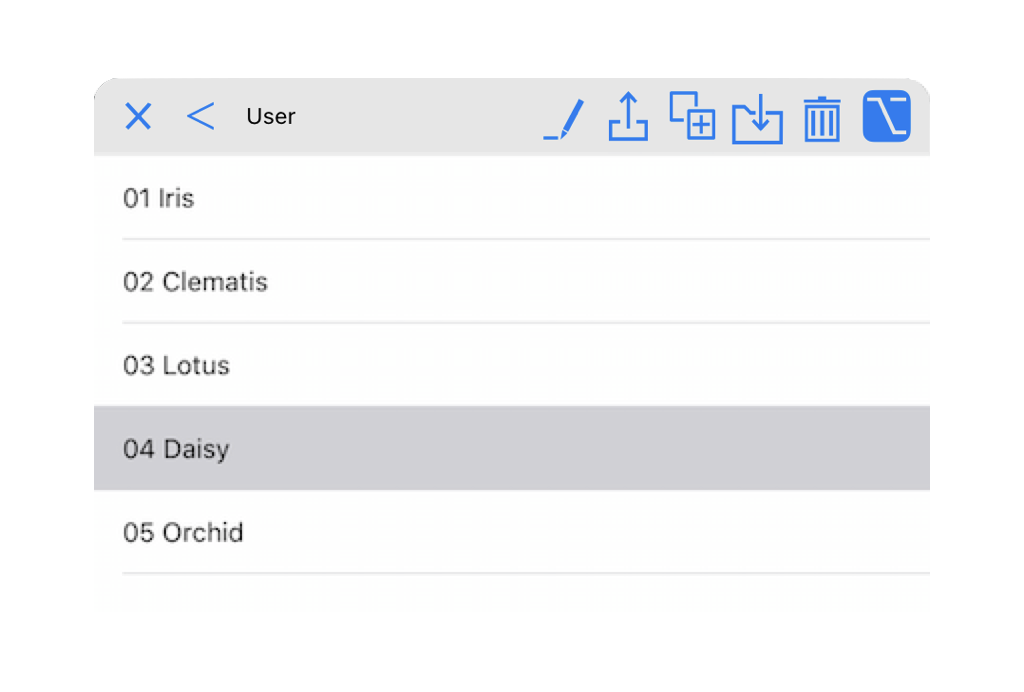
How to export sound presets
You can share your presets with other users.
- Press ALT button.

- Select only one preset or folder you want to export.
You cannot press the Export button with multiple presets or folders selected.

To export multiple presets at once, select a folder containing multiple presets and press the Export button.
Exporting in this manner allows multiple presets to be exported as a single file and the preset files contained within to be imported at once.
- Press Export button

- You can export the presets to Mail, iCloud, etc. via Share Extension
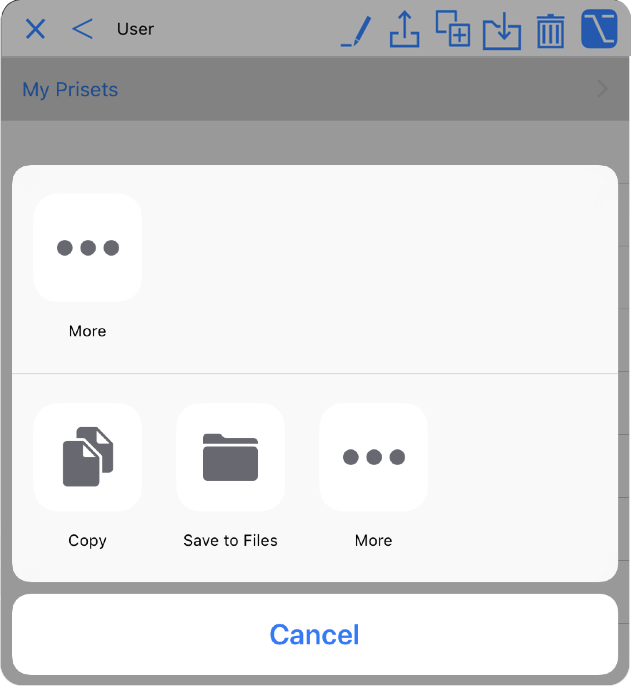
The size of the exported file is optimized and usually does not need to be compressed.
How to import sound presets
You can import presets exported in the previous method into the user presets folder.
Programs Folder
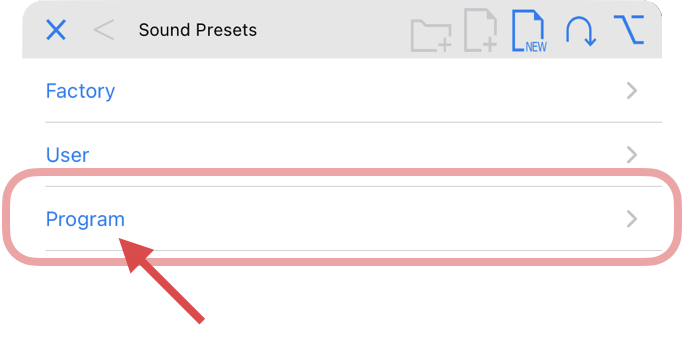
In the "Programs" folder you can define which presets will be loaded when a MIDI program change message is received. The program number corresponds to the order of the sound preset in the "Program" folder.
You can sort the order of the program number by putting a number before the name. → Display order of presets
AUv3 host preset list

The presets stored in this folder can also be displayed in the preset list of the AUv3 host. On the settings screen, you can choose to display the factory presets or the contents of the program folder.
Global Settings

You can open the settings screen by tapping the gear icon on the top right of the screen.
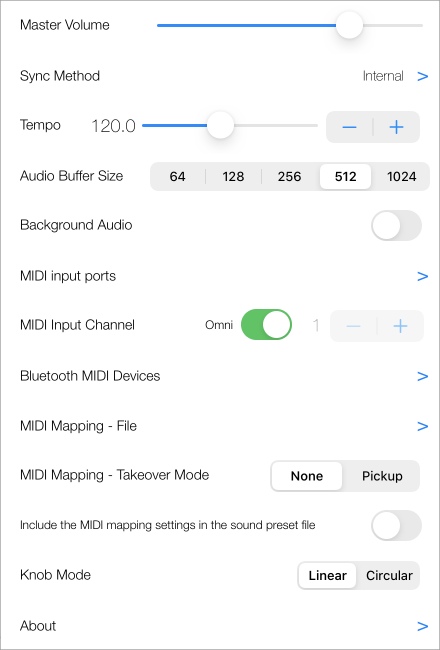
NOTE: On the plug-in mode setting screen, only the items that can be set are displayed. This image is the setting screen when launched as a standalone app.
- Master Volume
This setting is not affected by changing the sound preset.
- Sync Method (Available when launched as an app)
You can set the synchronization method of the arpeggiator and sequencer.
- Tempo (Available when launched as an app)
When the synchronization method is internal sync, you can change the tempo of the arpeggiator and sequencer.
- Audio Buffer Size (Available when launched as an app)
The audio buffer size affects the amount of latency and the CPU usage. Higher setting will reduce crackling noise at high CPU usage, but also cause more latency.
- Background Audio (Available when launched as an app)
If background audio is enabled, this app will consume battery power significantly even if other apps are running or if your screen is turned off.
- MIDI Input Ports (Available when launched as an app)
You can set which MIDI input port to receive.
- MIDI Input Channel (Available when launched as an app)
When the OMNI is OFF this app will receive only on the currently selected channel.
- Bluetooth MIDI Device (Available when launched as an app)
You can connect Bluetooth MIDI compatible controllers.
- MIDI Mapping - File
You can save/load MIDI mapping settings.
- MIDI Mapping - Takeover Mode
- None
As soon as you operate the MIDI controller, it will be reflected to the parameter. If the MIDI controller value and the parameter value are different, the parameter value will jump.
- Pickup
If the MIDI controller value is different from the parameter value, the parameter value will not be changed until the MIDI controller value crosses the currently set parameter value. However, even in this mode, if the MIDI controller is operated when the parameter value is out of the range set by the MIDI mapping, the set parameter value jumps to the boundary value of the range.
- Include the MIDI mapping settings in the sound preset file
- When Saving:
ON: Save the MIDI mapping settings in the sound preset file.
OFF: Save the sound preset file without including the MIDI mapping settings.
- When Loading:
ON: If there are MIDI mapping settings in the sound preset file, it will be loaded. If there are no MIDI mapping settings in the sound preset file, the current MIDI mapping settings will not change.
OFF: Even if there are MIDI mapping settings in the sound preset file, it will not be loaded.
- Knob Mode
How to operate the knob Switches between linear mode and circular mode.
- Display in a pop-up window (Available when launched as an AUv3 plugin)
Set whether to use pop-up display when running as AUv3. If this is set to OFF, the screen will not close even if you interact with the UI of the host app. Turn it off if you want to adjust the tone while playing the keyboard of the host app.
- About
Display version information, license information, etc.
MIDI Mapping
You can assign the MIDI controller knobs to the parameters.
MIDI Learning Mode
- Enter MIDI learning mode by tapping the MIDI Learn button.

- Touch the on-screen control you wish to map.
- Adjust the slider or knob on your MIDI controller. (MIDI CC)
- Repeat above steps as required.
MIDI Map Setting Panel
In MIDI learning mode, Press and hold the knob or other control to open the setting panel.
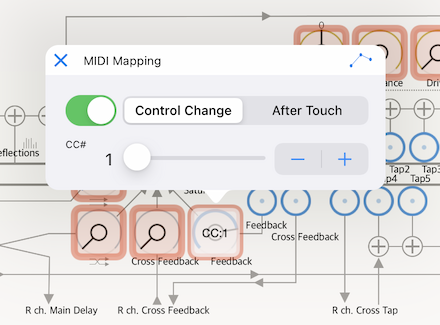
To delete the assigned MIDI mapping, tap the control several times.
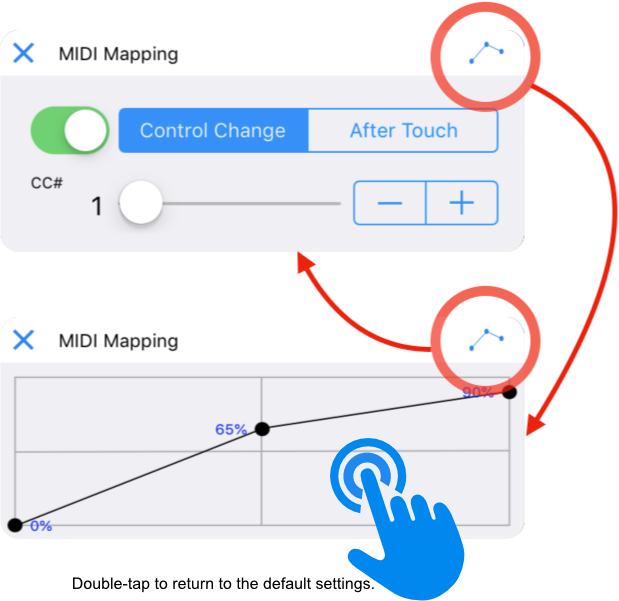
In the "MIDI 1.0 Control Change Messages" defined by the MIDI Association, controller numbers 120-127 are reserved for channel mode messages. Parameters cannot be mapped to these controller numbers reserved for channel mode messages.
MIDI Map Range Setting
The value given by the MIDI controller can be changed to a different value.
Save MIDI Mapping
You can save the created MIDI mapping from the setting screen.

When displayed in a large screen layout, the main parameters of each tap are displayed at the bottom of the screen.
Detailed parameters are displayed by tapping the button at the top of the screen.
Block Diagram
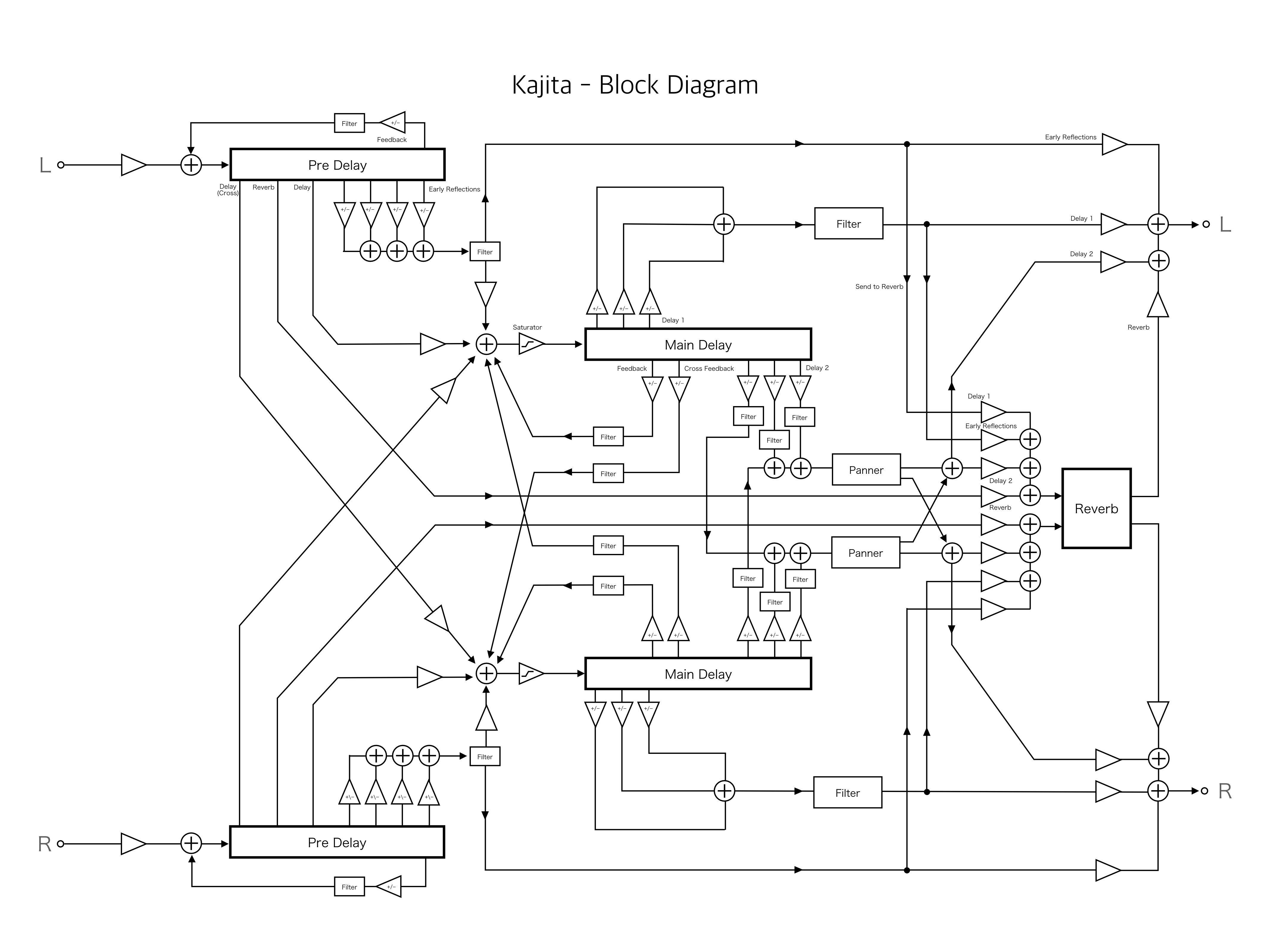
Parameters
Input
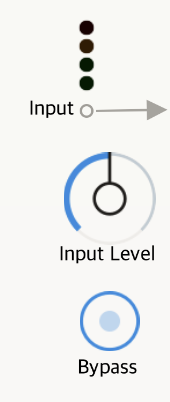
- Input Level
- Adjust the input volume.
- Bypass
- Press the button to output the input signal directrly.
Pre-Delay
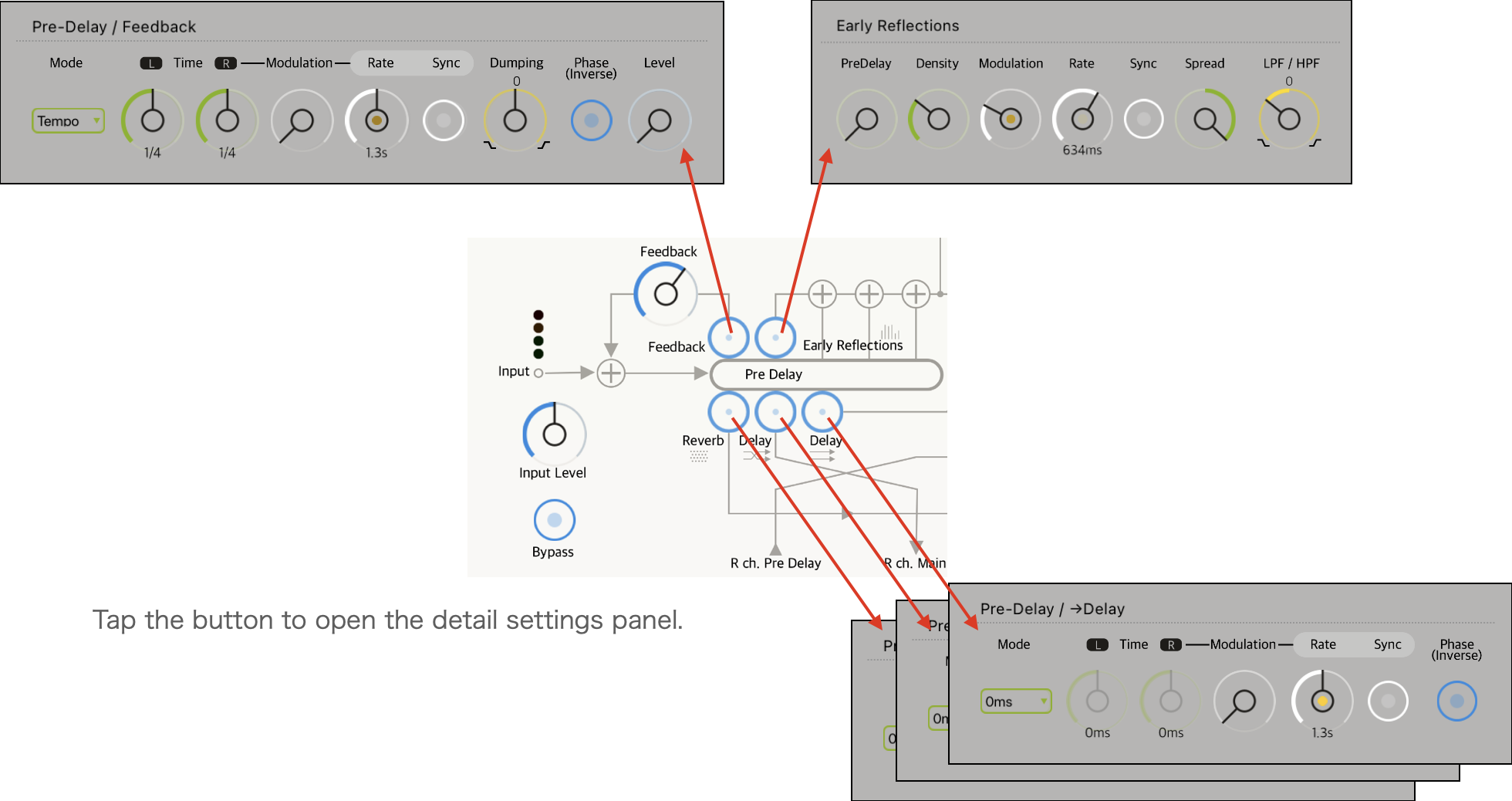
When displayed in a large screen layout, the main parameters of each tap are displayed at the bottom of the screen.
Detailed parameters are displayed by tapping the button at the top of the screen.
Feedback Tap

- Time Mode
- Switches the delay time range.
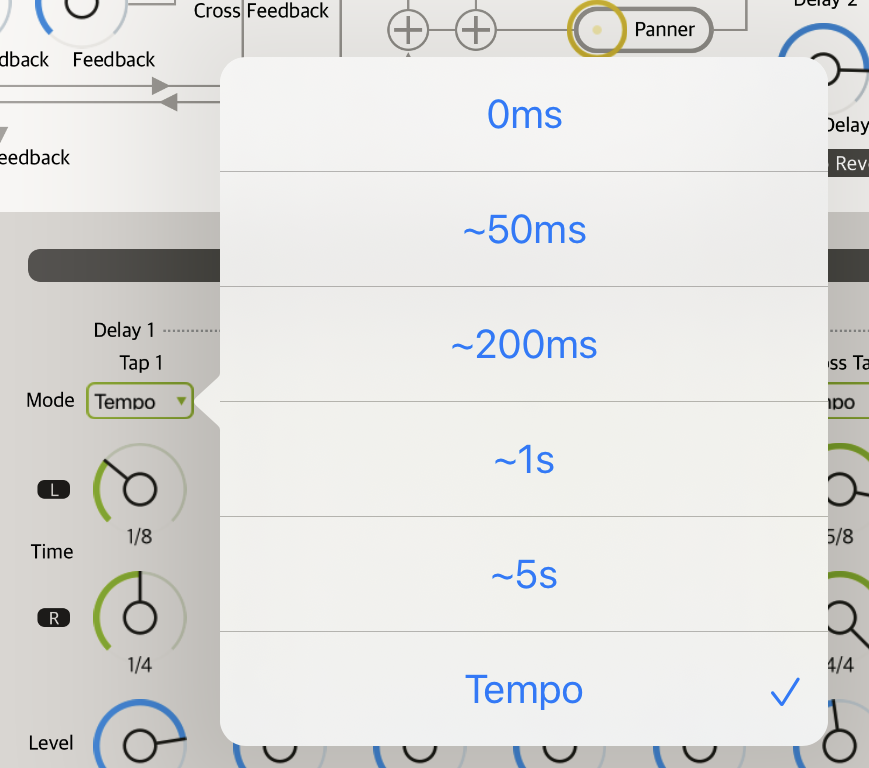
- Time (L/R)
- Adjust the delay time.
- Modulation
- Adjusts the depth of the delay time modulation.
- Rate
- Adjusts the rate for delay time modulation.
- Sync
- If the button is ON, the moduration rate will be synchronized to the tempo.
- Dumping
- Turning the knob clockwise causes higher frequencies to fade faster than low frequencies. Turning the knob counterclockwise causes lower frequencies to fade faster than high frequencies.

- Phase(Inverse)
- When On, a signal of opposite phase is output.
- Level
- Adjust the feedback level. Minimum feedback gives a single echo. Increasing this parameter produces repeating echoes.
Eary Reflections
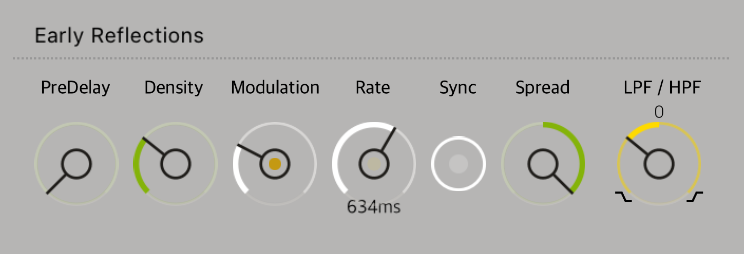
- PreDelay
- Adjusts the pre-delay time of early reflections.
- Density
- Adjusts the density of early reflections.
- Modulation
- Adjusts the depth of the delay time modulation.
- Rate
- Adjusts the rate for delay time modulation.
- Sync
- If the button is ON, the moduration rate will be synchronized to the tempo.
- Spread
- Adjusts the left and right spread of the early reflections.
- HPF/LPF
- Adjusts the cutoff frequency of the filter.

→Delay, →Delay(Cross), →Reverb

- Time Mode
- Switches the delay time range.

- Time (L/R)
- Adjust the delay time.
- Modulation
- Adjusts the depth of the delay time modulation.
- Rate
- Adjusts the rate for delay time modulation.
- Sync
- If the button is ON, the moduration rate will be synchronized to the tempo.
- Phase(Inverse)
- When On, a signal of opposite phase is output.
Main-Delay
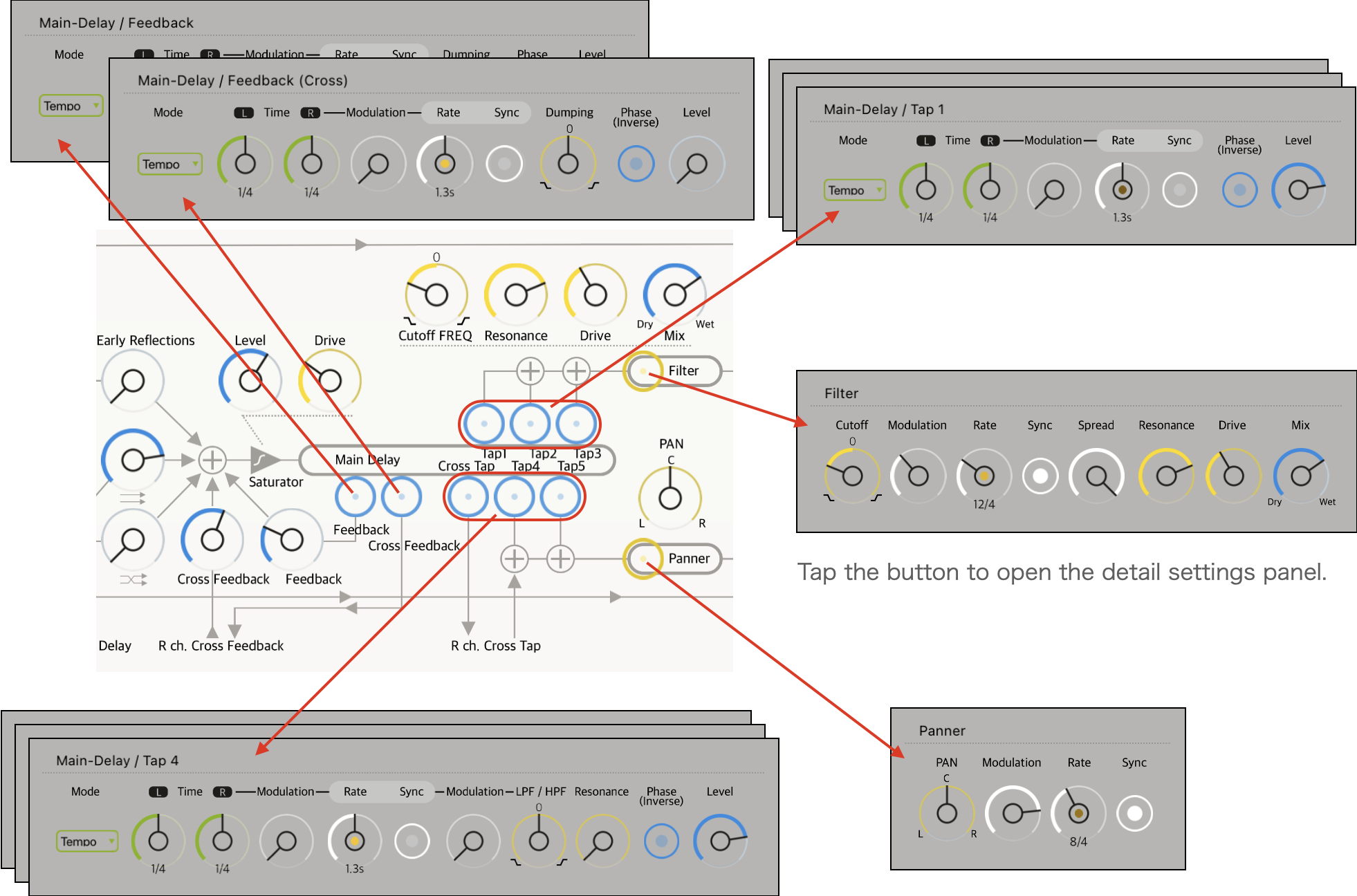
When displayed in a large screen layout, the main parameters of each tap are displayed at the bottom of the screen.
Detailed parameters are displayed by tapping the button at the top of the screen.
Feedback Tap, CrossFeedback Tap

- Time Mode
- Switches the delay time range.

- Time (L/R)
- Adjust the delay time.
- Modulation
- Adjusts the depth of the delay time modulation.
- Rate
- Adjusts the rate for delay time modulation.
- Sync
- If the button is ON, the moduration rate will be synchronized to the tempo.
- Dumping
- Turning the knob clockwise causes higher frequencies to fade faster than low frequencies. Turning the knob counterclockwise causes lower frequencies to fade faster than high frequencies.

- Phase(Inverse)
- When On, a signal of opposite phase is output.
- Level
- Adjust the feedback level. Minimum feedback gives a single echo. Increasing this parameter produces repeating echoes.
Tap 1, 2, 3

- Time Mode
- Switches the delay time range.

- Time (L/R)
- Adjust the delay time.
- Modulation
- Adjusts the depth of the delay time modulation.
- Rate
- Adjusts the rate for delay time modulation.
- Sync
- If the button is ON, the moduration rate will be synchronized to the tempo.
- Phase(Inverse)
- When On, a signal of opposite phase is output.
Tap 4, 5, 6(Cross)

- Time Mode
- Switches the delay time range.

- Time (L/R)
- Adjust the delay time.
- Time Modulation
- Adjusts the depth of the delay time modulation.
- Rate
- Adjusts the rate for delay time modulation.
- Sync
- If the button is ON, the moduration rate will be synchronized to the tempo.
- Frequency Modulation
- Adjusts the depth of the cutoff frequency modulation.
- LPF/HPF
- Adjusts the cutoff frequency of the filter.

- Resonance
- Emphasizes the cutoff frequency.
- Phase(Inverse)
- When On, a signal of opposite phase is output.
- Level
- Adjust the feedback level. Minimum feedback gives a single echo. Increasing this parameter produces repeating echoes.
Filter (for Taps 1-3)

- LPF/HPF
- Adjusts the cutoff frequency of the filter.
- Modulation
- Adjusts the depth of the cutoff frequency modulation.
- Rate
- Adjusts the rate for delay time modulation.
- Sync
- If the button is ON, the moduration rate will be synchronized to the tempo.
- Resonance
- Emphasizes the cutoff frequency.
- Drive
- Adjusts the overdrive intensity.
- Mix
- Adjusts the mix of dry and wet signal.
Panner (for Taps 4-6)
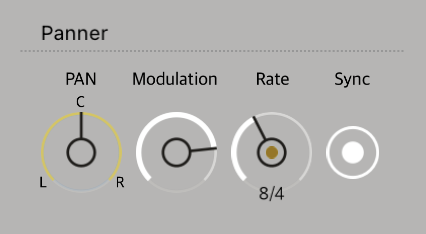
- PAN
- Adjust the PAN.
- Modulation
- Adjusts the depth of the PAN modulation.
- Rate
- Adjusts the rate for delay time modulation.
- Sync
- If the button is ON, the moduration rate will be synchronized to the tempo.
Reverb

- Mixer
- Adjusts the signal balance input to the reverb.
- Room Size
- Adjusts the size of the room that determines the reverberation density, etc.
-
- Time
- Adjusts the duration of the reverberation tail.
- HF Damp
- Adjusts the high frequency attenuation of the reverberation tail.
- Early Refrections
- Level
- Adjust the early refrections volume.
- Filter
- Adjust the filter passband of the early refrections.
- Tail
- Level
- Adjust the reverberation tail volume.
- Filter
- Adjust the filter passband of the reverberation tail.
Output
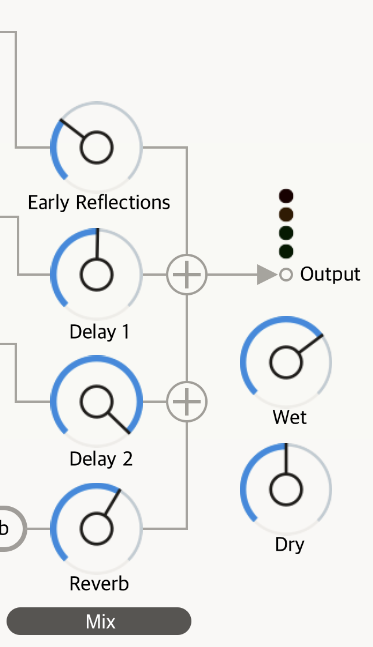
- Mixer
- Adjusts the signal balance input to the output.
- Wet / Dry
- Adjusts the level of the effect and dry sounds.










































